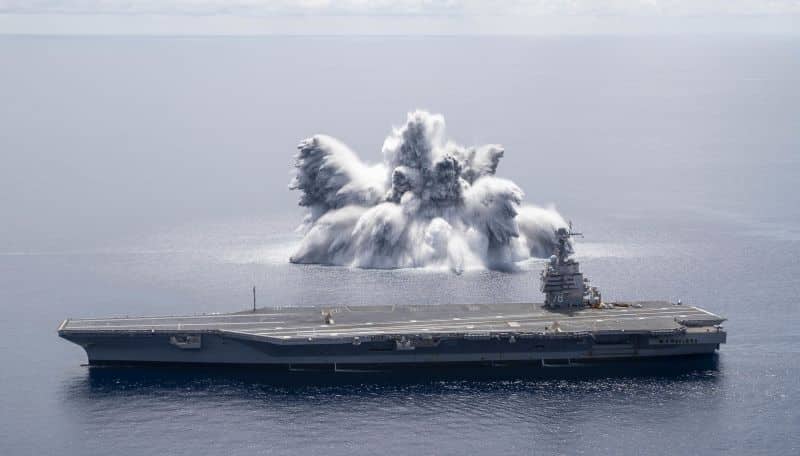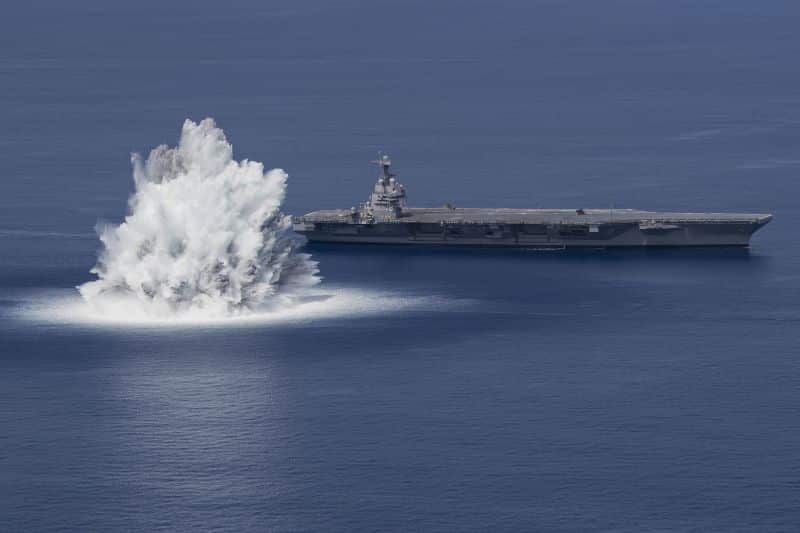
[ad_1]

The first-in-class aircraft carrier was designed using advanced computer modelling methods, testing, and analysis to ensure the ship is hardened to withstand battle conditions, and these shock trials provide data used in validating the shock hardness of the ship.
The U.S. Navy has conducted FSSTs over several decades, most recently for the Littoral Combat Ships USS Jackson (LCS 6) and USS Milwaukee (LCS 5) in 2016; as well as for the San Antonio-class amphibious transport dock USS Mesa Verde (LPD 19) in 2008, the amphibious assault ship USS Wasp (LHD 1) in 1990, and the guided-missile cruiser USS Mobile Bay (CG 53) in 1987. The last aircraft carrier to execute FSST was USS Theodore Roosevelt (CVN 71) in 1987.
The Navy is conducting the shock trial testing in accordance with Office of the Chief of Naval Operations Instruction 9072.2, and as mandated by the National Defense Authorization Act of 2016.

Image Credits: U.S. Navy / Mass Communication Specialist 3rd Class Riley B. McDowell
Ford’s shock trials are being conducted off the East Coast of the United States, within a narrow schedule that complies with environmental mitigation requirements, respecting known migration patterns of marine life in the test area. The Navy also has employed extensive protocols throughout FSST to ensure the safety of military and civilian personnel participating in the testing evolution.
Ford is the newest and most advanced aircraft carrier in the U.S. Navy. The ship closed out a successful 18-month Post Delivery Test & Trials period in April, during which the crew completed all required testing, accomplished planned improvements and maintenance ahead of schedule, and learned valuable lessons to increase the reliability of Ford-class systems.

Image Credits: U.S. Navy / Mass Communications Specialist Seaman Jackson Adkins
At the same time, the ship also served as the sole East Coast platform for conducting carrier qualifications.
Upon completion of FSST later this summer, Ford will enter a Planned Incremental Availability for six months of modernization, maintenance, and repairs prior to its operational employment.
Reference: navy.mil
Marine Insight does not own the rights of the video.
[ad_2]
This article has been posted as is from Source